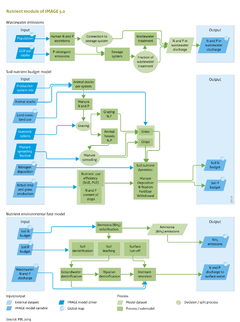Nutrients/Data uncertainties limitations: Difference between revisions
Jump to navigation
Jump to search
No edit summary |
No edit summary |
||
| Line 12: | Line 12: | ||
However, uncertainty is larger for some budget terms than for others. Data on fertiliser use are more reliable than on N and P animal excretions, which are calculated from livestock data ([[FAO, 2012b]]) and excretion rates per animal category. Data on crop nutrient withdrawal are less certain than on crop production, because the withdrawal is calculated with fixed global nutrient contents of the harvested proportions of marketed crops. In addition to uncertainty in nutrient contents, major uncertainties arise from insufficient data, for instance, on crops that are not marketed and on the use of crop residues. This leads to major uncertainties about nutrient withdrawal. | However, uncertainty is larger for some budget terms than for others. Data on fertiliser use are more reliable than on N and P animal excretions, which are calculated from livestock data ([[FAO, 2012b]]) and excretion rates per animal category. Data on crop nutrient withdrawal are less certain than on crop production, because the withdrawal is calculated with fixed global nutrient contents of the harvested proportions of marketed crops. In addition to uncertainty in nutrient contents, major uncertainties arise from insufficient data, for instance, on crops that are not marketed and on the use of crop residues. This leads to major uncertainties about nutrient withdrawal. | ||
Sensitivity analysis ([[Beusen et al., 2008]]) has shown that the main determinants of the | Sensitivity analysis ([[Beusen et al., 2008]]) has shown that the main determinants of the uncertainty in the nutrient model are: | ||
* N excretion rates; | * N excretion rates; | ||
* NH3 emission rates from manure in animal housing and storage systems; | * NH3 emission rates from manure in animal housing and storage systems; | ||
Revision as of 18:38, 20 May 2014
Parts of Nutrients/Data uncertainties limitations
| Component is implemented in: |
| Components: |
| Related IMAGE components |
| Projects/Applications |
| Key publications |
| References |
